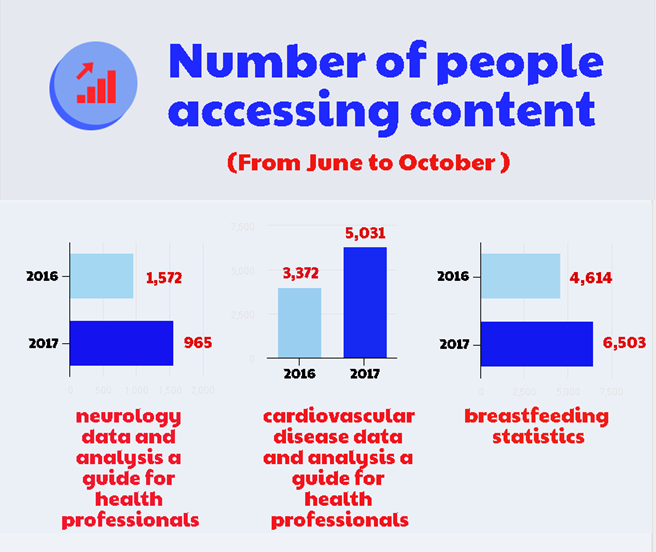
PHE is in the height of its digital transformation and the results are clear to see throughout the organisation.
We are trying to make the best use of technology to protect and promote health and reduce health inequalities. Part of this is retiring all of our old legacy websites, so that everyone can access the information they need from PHE on one website, GOV.UK. This has meant auditing and reviewing the content of more than 200 complex websites that contain fundamental services related to public health.
But we’ve come a long way since we started way back in 2013. We’ve reduced more than 130 legacy websites on a vast array of topics from childhood obesity to neurology and dementia, into a reduced number of pages on GOV.UK. We transformed the health intelligence network websites from 15,835 pages into just 33 pieces of content on GOV.UK.
As a result, we’ve seen huge improvements in the number of people accessing the information. Here are some examples:

How did we manage to achieve this?
Think about what percentage of words on a web page you think users read… 70%? 50%? Turns out the answer is between 20 to 28%! So we are taking a radical approach to content that focuses on user needs first.
This is a part of PHE and the Department of Health’s strategy to create a digital-first health service. We make sure that all of our content follows the principles set out in the Digital Service Standard and the GOV.UK. style guide. This makes digital content clear, easy to use and accessible for the most important people of all, which is you – our users.
We carry out user research to understand what information our users in public health need, then give them exactly what they need. Remember that 6 million people in the UK are dyslexic and 4.2 million people have English as a second language. So content should be accessible to everyone too. This includes people who are are blind, visually impaired, illiterate or have a learning disability and need to use a screen reader.
Transition is not the end it is the beginning
We don’t just publish and forget. We continue to track how users interact with the content through Google Analytics, to evaluate performance. And we continuously seek feedback from our users to make sure we are providing the best service.
Changing the mindset of the organisation
We are changing our way of thinking from what we think users should know, to what they actually need from us. As a result, we’ve seen a change throughout the organisation.
“I really see this as an opportunity and the start of doing things differently.”
Shaun Donaghy, Senior Economic Advisor, Health Economics team
Once people start thinking in a digital way, the effects are transformative. For example, some of our policy experts have found that clear, easy to understand emails get their point across better. And our cancer and non - cancer screening team have created an impeccable service because they thought of user needs first.
By last April we achieved a lot in transition. The benefits to the organisation as a whole are enormous, and I would encourage everyone who works in a public health organisation to take a digital-first approach.
How you can transform your content
Whether you work in Clinical Commissioning Groups (CCGs), are a Director of Public Health or write health policy, you can improve your service online by taking a user-centred approach.
You can do this by:
✓ iterating your content – this is what you can do right now to revolutionise your content. Take a look back at your content and see if it follows the Digital Service Standard.
✓ putting user needs first – whenever you are creating new content, think about who your users are. Before you start adding information you think they should know, think to yourself, what does my user actually need to do?
✓ using plain English – did you know that half of the UK workforce have a reading age of 11? So write in clear, plain english. The Hemingway app is a fantastic resource that checks spelling and grammar, use of active voice and readability. It even gives you a reading grade – aim for grades 7 to 9. Mark Morris who ran the clear English campaign at the Department of Health and Social Care shows why clarity is king.
✓ tracking your content – take a look at the Google Analytics data. This is critical in showing you whether your users are getting what they need easily.
✓ making content accessible – make sure that your content is accessible to a wide range of people. Could your content be understood by a screen reader? Remember everyone should understand information that has a vital impact on their health and others.
Providing a digital-first health service takes a little effort, but the potential rewards are outstanding.
Read our previous digital blog here.

1 comment
Comment by N Clark posted on
Dear all,
I found this article very interesting. I teach undergraduate occupational therapy students, and discussion on the use of web materials is included within our curriculum in many places.
I can understand why this is done for the public, oveloading of info, dr google etc, however, please do not ignore the professionals and those in training who do find large in-depth content interesting and use this as part of their evidence based practice.
Kind regards,
N Clark